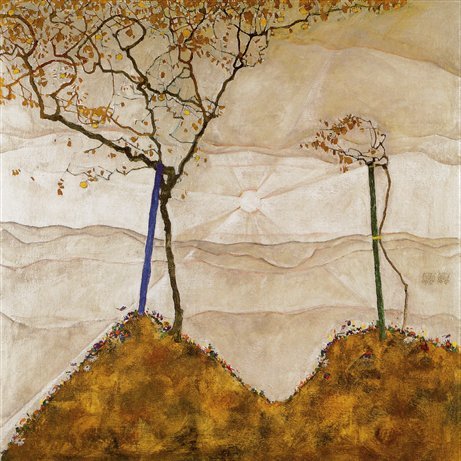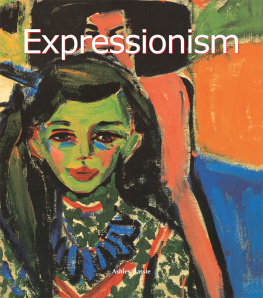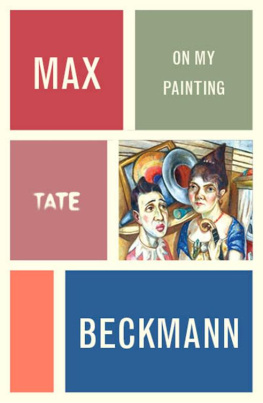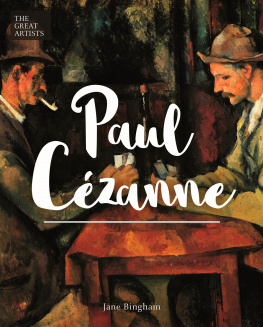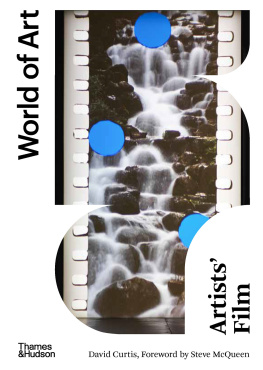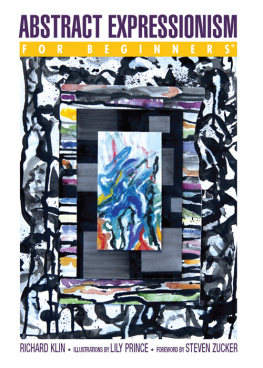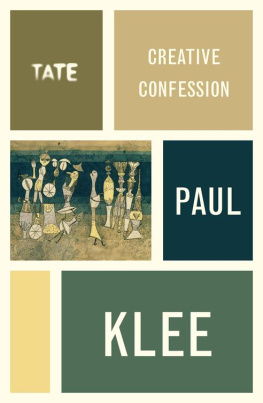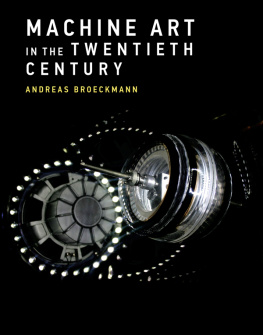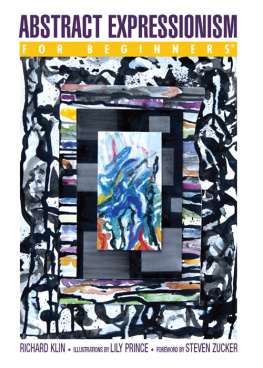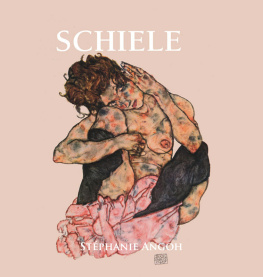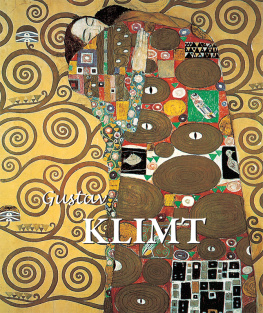Author: Ashley Bassie
Layout:
Baseline Co. Ltd
61A-63A Vo Van Tan Street
4 th Floor
District 3, Ho Chi Minh City
Vietnam
Parkstone Press International, New York
Confidential Concepts, worldwide, USA
Max Beckmann Estate / Artists Rights Society (ARS), New York / VG Bild-Kunst, Bonn
Otto Dix Estate / Artists Rights Society (ARS), New York / VG Bild-Kunst, Bonn
Hugo Erfurt / Artists Rights Society (ARS), New York / VG Bild-Kunst, Bonn
Conrad Felixmller Estate / Artists Rights Society (ARS), New York / VG Bild-Kunst, Bonn
Art George Grosz / Licensed by VAGA, New York, NY
Alfred Hanf
Erich Heckel Estate / Artists Rights Society (ARS), New York / VG Bild-Kunst, Bonn
Alexe von Jawlensky Estate / Artists Rights Society (ARS), New York / VG Bild-Kunst, Bonn
Wassily Kandinsky Estate / Artists Rights Society (ARS), New York / ADAGP, Paris
By Ingeborg & Dr. Wolfgang Henze-Ketterer, Wichtrach/Bern
Paul Klee Estate / Artists Rights Society (ARS), New York / VG Bild-Kunst, Bonn
Oskar Kokoschka Estate / Artists Rights Society (ARS), New York / Pro Litteris, Zurich
Kthe Kollwitz Estate / Artists Rights Society (ARS), New York / VG Bild-Kunst, Bonn
Ludwig Meidner
Kunstsammlungen Bttcherstrae Bremen, Paula Modersohn-Becker Museum
Otto Mueller Estate / VG Bild-Kunst, Bonn
Edvard Munch Estate / Artists Rights Society (ARS), New York/ Bono, Oslo
Gabriele Mnter Estate / Artists Rights Society (ARS), New York / VG Bild-Kunst, Bonn
Heinrich Nauen Estate / Artists Rights Society (ARS), New York / VG Bild-Kunst, Bonn
Emil Nolde Estate / Artists Rights Society (ARS), New York / VG Bild-Kunst, Bonn
Nolde Stiftung Seebll
Max Pechstein Estate / Artists Rights Society (ARS), New York / VG Bild-Kunst, Bonn
Christian Rohlfs Estate / Artists Rights Society (ARS), New York / VG Bild-Kunst, Bonn
Karl Schmidt-Rottluff Estate / Artists Rights Society (ARS), New York / VG Bild-Kunst, Bonn
Foto : Stdtische Galerie im Lenbachhaus Mnchen
Sprengel Museum Hannover, Photo: Michael Herling/Aline Gwose
All rights reserved.
No part of this book may be reproduced or adapted without the permission of the copyright holder, throughout the world. Unless otherwise specified, copyright on the works reproduced lies with the respective photographers. Despite intensive research, it has not always been possible to establish copyright ownership. Where this is the case, we would appreciate notification.
ISBN: 978-1-78310-326-3
Ashley Bassie
EXPRESSIONISM

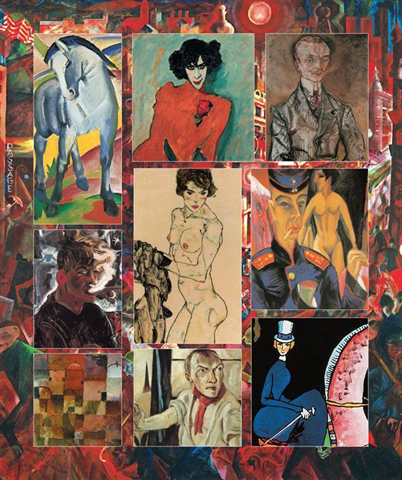
Contents
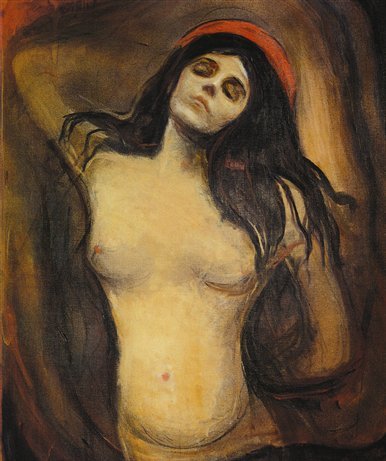
Edvard Munch,
Madonna, 1893-1894.
Oil on canvas, 90 x 68.5 cm.
Munch-museet, Oslo.
WHAT IS EXPRESSIONISM?
Expressionism has meant different things at different times. In the sense we use the term today, certainly when we speak of German Expressionism, it refers to a broad, cultural movement that emerged from Germany and Austria in the early twentieth century. Yet Expressionism is complex and contradictory. It encompassed the liberation of the body as much as the excavation of the psyche. Within its motley ranks could be found political apathy, even chauvinism, as well as revolutionary commitment. The first part of this book is structured thematically, rather than chronologically, in order to draw out some of the more common characteristics and preoccupations of the movement. The second part consists of short essays on a selection of individual Expressionists, highlighting the distinctive aspects of each artists work.
Expressionisms tangled roots range far back into history and across wide geographical terrain. Two of its most important sources are neither modern, nor European: the art of the Middle Ages and the art of tribal or so-called primitive peoples. A third has little to do with visual art at all the philosophy of Friedrich Nietzsche. To complicate matters further, the word Expressionism initially meant something different. Until about 1912, the term was used generally to describe progressive art in Europe, chiefly France, that was clearly different from Impressionism, or that even appeared to be anti-Impressionist. So, ironically, it was first applied most often to non-German artists such as Gauguin, Czanne, Matisse and Van Gogh. In practice, well up to the outbreak of the First World War, Expressionism was still a catch-all phrase for the latest modern, Fauviste, Futurist or Cubist art. The important Sonderbund exhibition staged in Cologne in 1912, for example, used the term to refer to the newest German painting together with international artists.
In Cologne though, the shift was already beginning. The exhibition organisers and most critics emphasised the affinity of the Expressionism of the German avant-garde with that of the Dutch Van Gogh and the guest of honour at the show, the Norwegian Edvard Munch. In so doing, they slightly played down the prior significance of French artists, such as Matisse, and steered the concept of Expressionism in a distinctly Northern direction. Munch himself was stunned when he saw the show. There is a collection here of all the wildest paintings in Europe, he wrote to a friend, Cologne Cathedral is shaking to its very foundations. More than geography though, this shift highlighted Expressionist qualities as lying not so much in innovative formal means for description of the physical world, but in the communication of a particularly sensitive, even slightly neurotic, perception of the world, which went beyond mere appearances. As in the work of Van Gogh and Munch, individual, subjective human experience was its focus. As it gathered momentum, one thing became abundantly clear Expressionism was not a style. This helps to explain why curators, critics, dealers, and the artists themselves, could rarely agree on the use or meaning of the term.
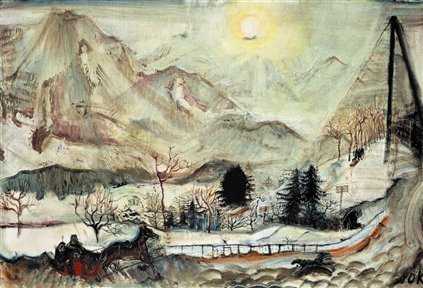
Oskar Kokoschka,
Dents du Midi, 1909-1910.
Oil on canvas, 80 x 116 cm.
Private collection.
Nonetheless, Expressionism gained wide currency across the arts in Germany and Austria. It was first applied to painting, sculpture and printmaking and a little later to literature, theatre and dance. It has been argued that while Expressionisms impact on the visual arts was most successful, its impact on music was the most radical, involving elements such as dissonance and atonality in the works of composers (especially in Vienna) from Gustav Mahler to Alban Berg and Arnold Schoenberg. Finally, Expressionism infiltrated architecture, and its effects could even be discerned in the newest modern distraction film.
Historians still disagree today on what Expressionism is. Many artists who now rank as quintessential Expressionists themselves rejected the label. Given the spirit of anti-academicism and fierce individualism that characterised so much of Expressionism, this is hardly surprising. In his autobiography, Jahre der Kmpfe (Years of Struggle), Emil Nolde wrote: The intellectual art literati call me an Expressionist. I dont like this restriction.
